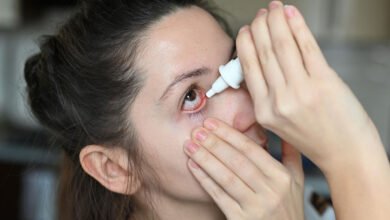Comparing Multi-Parameter Patient Simulators: Which One is Right for Your Lab?

Introduction
Choosing the right multi-parameter patient simulator can feel overwhelming. With options ranging from ultra-compact handheld devices to full-featured simulators for teaching hospitals, biomedical engineers must weigh portability, functionality, and cost.
In this article, we’ll compare the most widely used simulators, highlight the differences, and explain how products like the SimSlim® Multi-Parameter Simulator and EasySim® Clinical Educator Simulator support different environments.
Why Multi-Parameter Simulators Are Essential
- Versatility: Instead of buying separate devices for ECG, IBP, respiration, and temperature simulation, one compact unit covers them all.
- Training Efficiency: Multi-parameter devices allow consistent scenarios in classrooms or workshops.
- Cost Savings: By consolidating functions, hospitals and schools reduce their long-term investment.
Spotlight on the SimSlim®
The SimSlim® Multi-Parameter Simulator is known for its ultra-portable design. Small enough to fit in a pocket, it simulates:
- ECG and arrhythmias
- Respiration
- Invasive blood pressure (IBP)
- Temperature
- Cardiac output
Key strength: A 10-year battery life means engineers can rely on it for years without recharging or replacing batteries.
Spotlight on the EasySim®
The EasySim® Clinical Educator Simulator is built for education rather than field portability. It includes:
- ECG
- IBP
- Respiration
- Temperature
- LV-to-Ao pullback simulation
Key strength: Instructors can demonstrate complex clinical scenarios in a classroom setting, making it ideal for teaching hospitals and technical schools.
Bundled Options: BMET PACK PRO
For labs and field engineers, BMET PACK PRO provides the best of both worlds. It combines SimSlim®, SimCube®, FlowTrax®, and Safe-T Sim® into one rugged backpack, ensuring engineers have every tool they need in one kit.
How to Choose
- Primary Use Case: Field testing (SimSlim®) vs. education (EasySim®).
- Portability Needs: Do you need to carry the device between wards or keep it in a lab?
- Budget: Bundled kits like BMET PACK PRO offer the best long-term value.
Case Example
A biomedical engineering lab selected SimSlim® for portability, allowing quick checks in patient care areas. A teaching hospital, however, chose EasySim® because it allowed faculty to replicate complex arrhythmias for nursing students. Both institutions maximized their training and testing capabilities by choosing the right tool for their needs.
FAQ
Q: Can one simulator cover all needs in a hospital?
A: Not always. Portable models are better for field use, while advanced simulators support training programs.
Q: How often should simulators be calibrated?
A: Annually, with NIST-traceable calibration certificates.
Q: Do these simulators support wireless data capture?
A: Yes, when paired with Mobilize Wireless Suite.
Conclusion
There’s no one-size-fits-all solution for multi-parameter simulation. The SimSlim® excels in portability, while the EasySim® shines in education. For a versatile solution that covers both, BMET PACK PRO offers unmatched flexibility.





